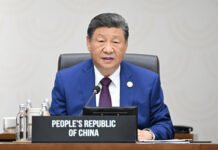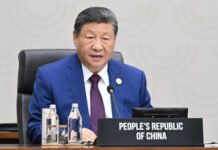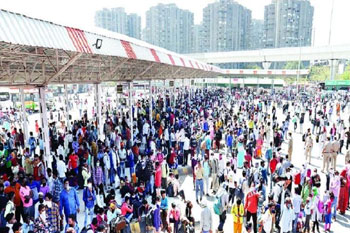The United States, under former President Donald Trump’s policy framework, has reignited the tariff war by imposing hefty import duties on Mexico, Canada, and China. With 25% tariffs on Mexican and Canadian imports and a 10% levy on Chinese goods, global trade dynamics are shifting rapidly. This policy, aimed at bolstering American domestic manufacturing, has created uncertainty across global markets. The question remains: how will India be affected by this decision?
India’s Economic Position Amidst the Tariff War
India, a rapidly emerging economic powerhouse, is keenly observing these developments. Finance Minister Nirmala Sitharaman, in a recent interview, acknowledged the potential indirect effects on India’s economy. While the immediate impact remains uncertain, the shift in global trade relations could open new opportunities or pose new challenges for India.
Potential Benefits for India
The U.S.-China trade war has already caused a realignment of global supply chains. India, with its strong manufacturing and services sectors, is in a position to capitalize on market gaps left by China. The increased tariffs on Chinese imports might push American companies to diversify their sourcing options, potentially benefiting Indian exporters in sectors such as:
- Textiles & Apparel – With China facing higher tariffs, Indian textile manufacturers may gain a stronger foothold in the U.S. market.
- Pharmaceuticals – India is a major supplier of generic drugs to the U.S., and any disruptions in the China-U.S. trade flow could boost Indian pharma exports.
- Electronics & IT Services – The Indian government’s Production-Linked Incentive (PLI) schemes aim to position India as a global electronics manufacturing hub, attracting companies looking for alternatives to China.
- Auto Components & Engineering Goods – With rising tariffs on North American imports, Indian firms may find new export opportunities to supply parts and components to U.S. industries.
Challenges and Risks for India
While potential opportunities exist, India is not immune to the risks associated with global tariff wars. Some of the major challenges include:
- Raw Material Costs – Many Indian manufacturers rely on Chinese imports for raw materials. Higher tariffs on China could lead to higher input costs, affecting production and pricing.
- Export Competition – Countries like Vietnam, Bangladesh, and Indonesia are also positioning themselves as China alternatives. India must remain competitive in pricing, quality, and production efficiency.
- Uncertainty in Global Trade Relations – Increased protectionism by the U.S. could lead to unpredictable trade policies, impacting Indian businesses reliant on exports.
Finance Minister’s Perspective: A Balanced Approach
Finance Minister Nirmala Sitharaman has emphasized the importance of maintaining economic stability and strategically positioning India in the evolving trade landscape. She highlighted that India must:
- Protect Domestic Industries – Without imposing excessive tariffs on essential imports.
- Encourage Foreign Investment – By improving the ease of doing business and offering incentives to global manufacturers.
- Strengthen Bilateral Trade Relations – Particularly with emerging markets and U.S. allies looking to shift away from China.
Will India Become a Global Manufacturing Hub?
Government Initiatives to Attract Investments
India has launched several key initiatives to attract multinational companies, including:
- Production-Linked Incentive (PLI) Scheme – Incentivizing manufacturing in electronics, pharmaceuticals, and automobiles.
- Make in India 2.0 – A renewed push to boost domestic production and exports.
- Infrastructure Development – Investments in logistics, port connectivity, and smart manufacturing zones.
Foreign Companies Increasing Presence in India
Companies like Apple, Samsung, and Tesla have already started shifting production to India. The semiconductor industry is also witnessing interest, with U.S. and European firms exploring partnerships with Indian manufacturers.
Long-Term Impact on India’s Trade Relations
India-U.S. Relations: A Mixed Outlook
While India could benefit from shifting trade dynamics, it must also navigate challenges in its own trade negotiations with the U.S. Some key areas to watch include:
- U.S. Pressure on Indian Tariff Policies – The U.S. has previously raised concerns over India’s high import duties on products like automobiles, medical devices, and technology goods.
- India’s Stance on Intellectual Property & Digital Trade – American tech firms often lobby for favorable data policies in India, which could lead to negotiations over trade agreements.
- Defense & Strategic Partnerships – India’s growing defense ties with the U.S. may influence bilateral trade agreements, impacting tariff structures.
India-China Trade Relations: Shifting Dynamics
Despite ongoing border tensions, India remains highly dependent on Chinese imports for key industrial inputs. The U.S. tariff move could further strain China’s economic position, possibly affecting:
- Chinese investment in India – Some Chinese firms may redirect investments to India to bypass U.S. tariffs.
- Supply Chain Disruptions – If China retaliates against U.S. tariffs, it could impact global supply chains, affecting Indian manufacturers reliant on Chinese components.















